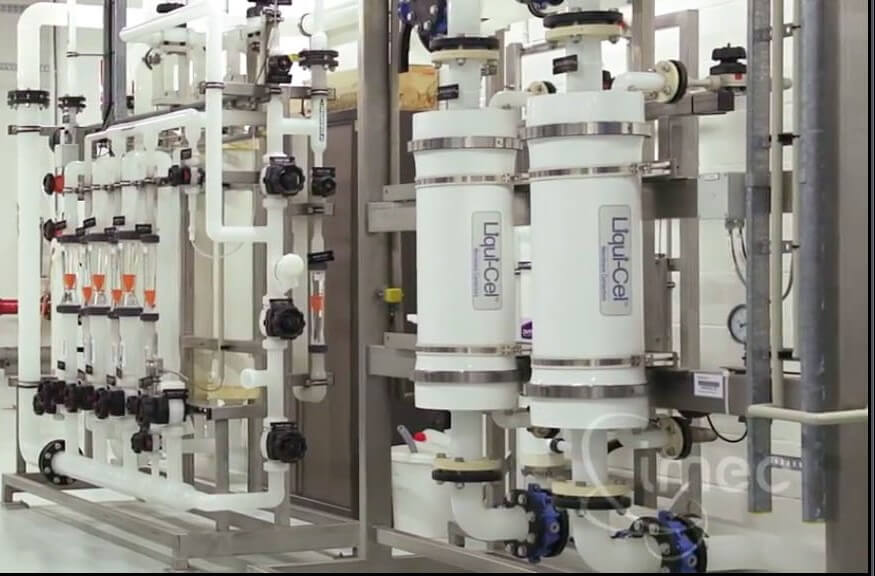


Dissolved gases affect the quality of drinking and high purity water and can reduce the effectiveness of non-potable water purification techniques using Reverse Osmosis and Electrodeionization, same with the high purity water applications.
Membrane Degassing is a preferred answer to the problem, requiring no consumption or disposal of dosing chemicals to remove gases from solution. The technique uses a device known as a Membrane Contactor, or Membrane Degassing Unit (MDU). It employs a gas-permeable membrane, normally in combination with either a vacuum, or a flow of gas such as nitrogen, to remove the unwanted gases in the supply stream. Benefits of degassing include improved water quality, better process efficiency and higher performance of downstream purification equipment
TYPICAL MEMBRANE DEGASSING APPLICATIONS
Membrane Contactors can be used to introduce gases to a liquid stream but most often, their function is to remove dissolved gas and bubbles. In the case of drinking water, hydrogen sulphide is commonly removed and in many industrial applications, oxygen and carbon dioxide are the target gases.
There are numerous industrial process water applications for Membrane Contactors. The most critical is wafer fabrication for semiconductor, display screen and photovoltaic cell production, where oxygen and carbon dioxide must be reduced to very low levels in the treatment of process wash water. This is important to eliminate the additional load on electrodeionization modules or ion exchange resins, which would otherwise prevent them from polishing water to the extremely low conductivity demanded.
In thermal power plants, where steam is generated at high temperatures and pressures to maximize efficiency, boilers, turbines and pipe systems would be subject to accelerated corrosion and scaling without appropriate feed water treatment.
De-oxygenation is a vital corrosion counter-measure. However, deionization is also essential to produce Ultra-Pure Water, so that degassing is again a key stage in the process, frequently performed by Membrane Contactors.
As well as safeguarding the deionization of water in other industries, such as pharmaceuticals manufacturing, Membrane Degassing can also be important in laboratory situations, where dissolved gases in fluids can affect the accuracy of analytical equipment.
